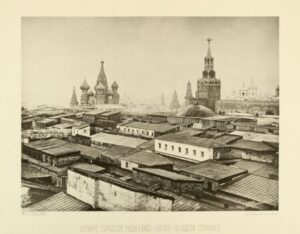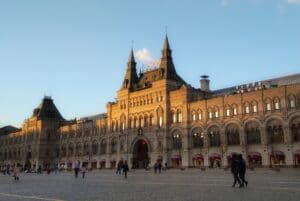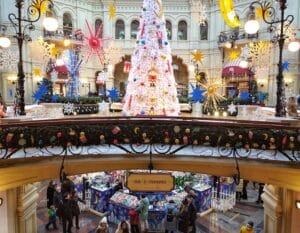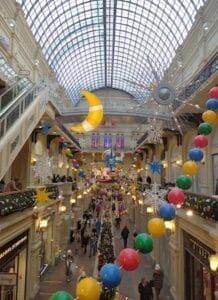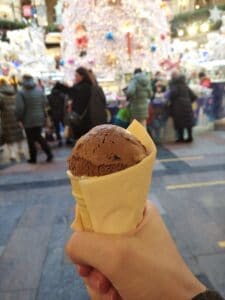An elaborate shopping mall just off Red Square and opposite the Kremlin, Moscow’s GUM (ГУМ – pronounced “Goom”) has been among the foremost shopping centers in Russia for all of its more than century-long existence. While GUM today is synonymous with high-end designer brand shopping, this wasn’t always the case. Moscow’s landmark shopping center had plenty of twists and turns in its design and history, keeping pace with the changes in Russia during the 20th century.
GUM Through the Ages
Completed in 1893 under the Russian Empire, its design and that of others like it was based off the covered bazaars in Egypt and Italy at the time. Architecturally, the building is decidedly Victorian, making it stand out from many other structures in Moscow. It is said that the style, particularly as represented in English train stations, made a particular impression on the royal family during trips to England.
The site on which GUM now stands has long been a trading hub. The first formal trade building there had been built under Catherine the Great, but was later lost in the great fire of 1812, when Moscow was under French occupation. Following the fire, formal market complexes were replaced by a much more modest and haphazard business and residential area.
In 1888, under Alexander III, the land was cleared again and construction on GUM begun. Designed by famed architect Alexander Pomerantsev and engineered by Vladimir Shukhov, the building, although conceived of through foreign influences, can be said to be entirely Russian.
Originally called The Upper Trading Rows, it was to serve as a symbol of wealth and European identity for Moscow, bringing in traders from all corners of the empire. Intricately detailed finishings cleverly concealed a hidden metal frame to form its distinctive shape. The ornate architecture mixed together European designs with the unique cultural and architectural heritage of Russia at the time. When completed, GUM held spaces for more than 1,000 stores; today, most of these have been consolidated to around 150 spaces, including restaurants and a movie theater.
The shopping center was nationalized at the fall of the empire. Its name was changed to mark this shift, giving GUM its current moniker, which, at the time, stood for “State Department Store,” (Государственный Универсальный Магазин – Gosudarstvenii Universalnii Magazin).
Under the Soviet Union, Lenin initially sought to make GUM a marker of success in combining consumerism with communism. Stalin felt the opposite, converting GUM into office spaces and even twice trying to tear the whole building down. Instead, in 1953 following Stalin’s death, GUM was reopened as a market space and became the biggest place in Moscow to buy basic goods. The authorities made a point of keeping its shelves constantly stocked, as a sign of the Russian people’s prosperity, even as shopping queues snaked across Red Square.
Visiting GUM Today
At the end of the Soviet Union, GUM was re-privatized, and “State” was dropped for “Main” (Главный – Glavnii) so that it could keep its iconic GUM brand. Since 1991, while GUM remains a landmark retail space, it has increasingly become best known for luxury shopping in Russia. Instead of Soviet shops serving essentials to everyday people, the great halls of GUM play host to Gucci, Fendi, Prada, and other leading fashion brands. You can buy jewelry, clothing, and even high-end home appliances. The building itself, however, is a tourist spot and is frequented by many who are just there to window shop, admire the architecture, and sample the GUM-branded ice cream that is now world-famous. (Note: only 100 rubles, but cash-only, so plan ahead!).
Shopping at GUM may not be the most affordable (or smartest) way to buy goods in Russia, but visiting GUM is about the experience. Huge crossing halls rise up three floors to elegant glass roofs. Bridges arch over the lower floors to link together balconies, and the iconic GUM fountain, themed to seasonal decor as always, sits at the very center.
The store has continual and rotating exhibtions as well. Including sumptuous seasonal displays that penetrate nearly all walkways within the mall with flowers in the springtime, pumpkins and haybales in fall, and of course holiday decorations for Christmas and New Years. Throughout the year you might also displays showing the history of bicycles in Russia or other historical or cultural history.
GUM is free to enter and accessible from all sides, including directly off Red Square. There are no guides in English to the building itself, but most signs have both English and Russian script, and GUM’s website, which offers a section on its history, comes in both English and Russian. Depending on how much you enjoy shopping, a couple hours is plenty of time to add a worthwhile extension to your trip to Red Square!
Photos of GUM in Moscow
You’ll Also Love

The Moscow We’ve Lost
The following was originally written in Russian by the popular Russian blogger and photographer Zyalt. It can be seen in the original in his blog. It is presented here for the edification of English speakers interested in Russian architectural heritage and history. The Moscow We’ve Lost: 10 Architectural Losses of the 20th Century For […]
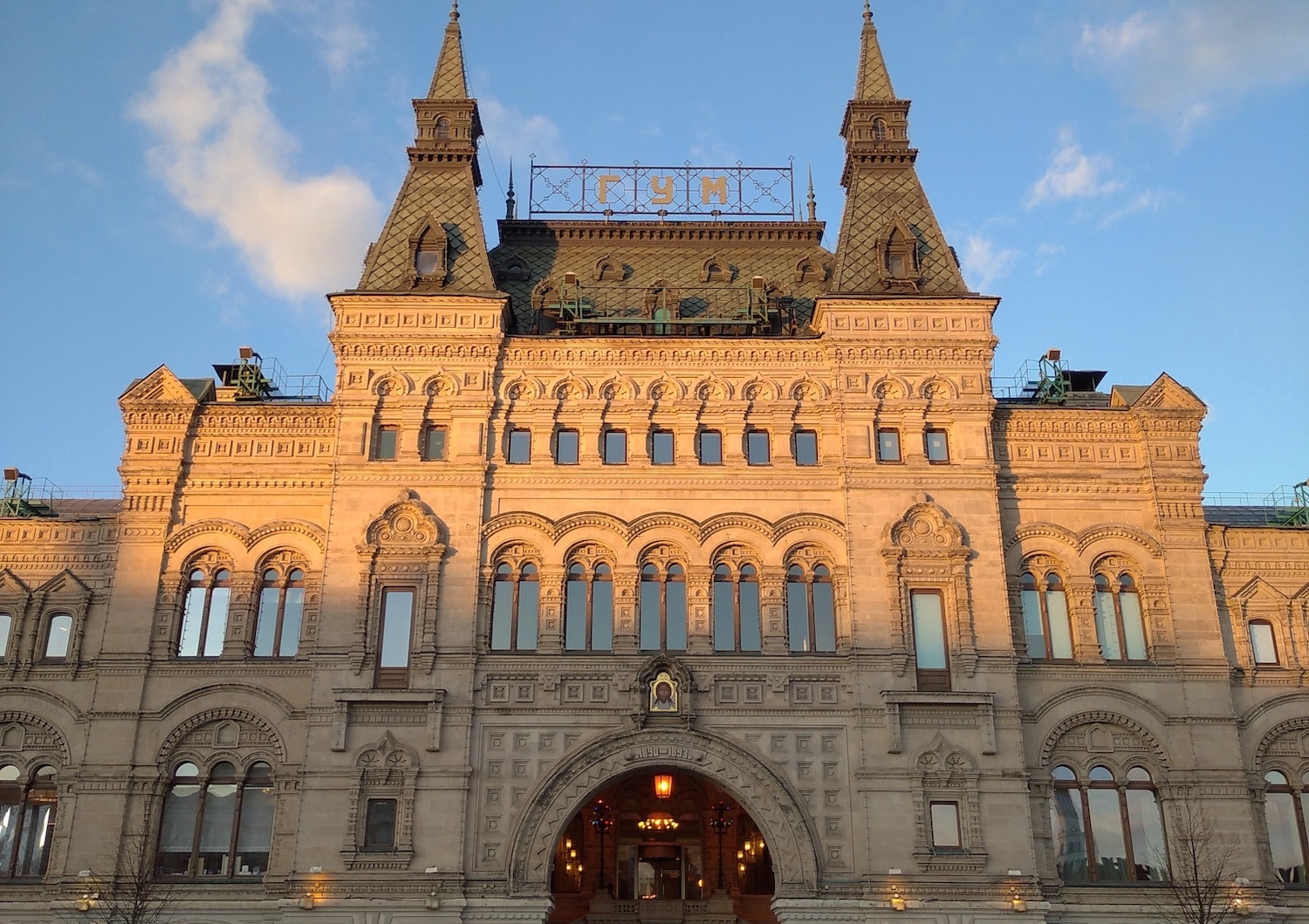
Moscow’s GUM Shopping Center: Shopping and Exhibitions
An elaborate shopping mall just off Red Square and opposite the Kremlin, Moscow’s GUM (ГУМ – pronounced “Goom”) has been among the foremost shopping centers in Russia for all of its more than century-long existence. While GUM today is synonymous with high-end designer brand shopping, this wasn’t always the case. Moscow’s landmark shopping center had […]
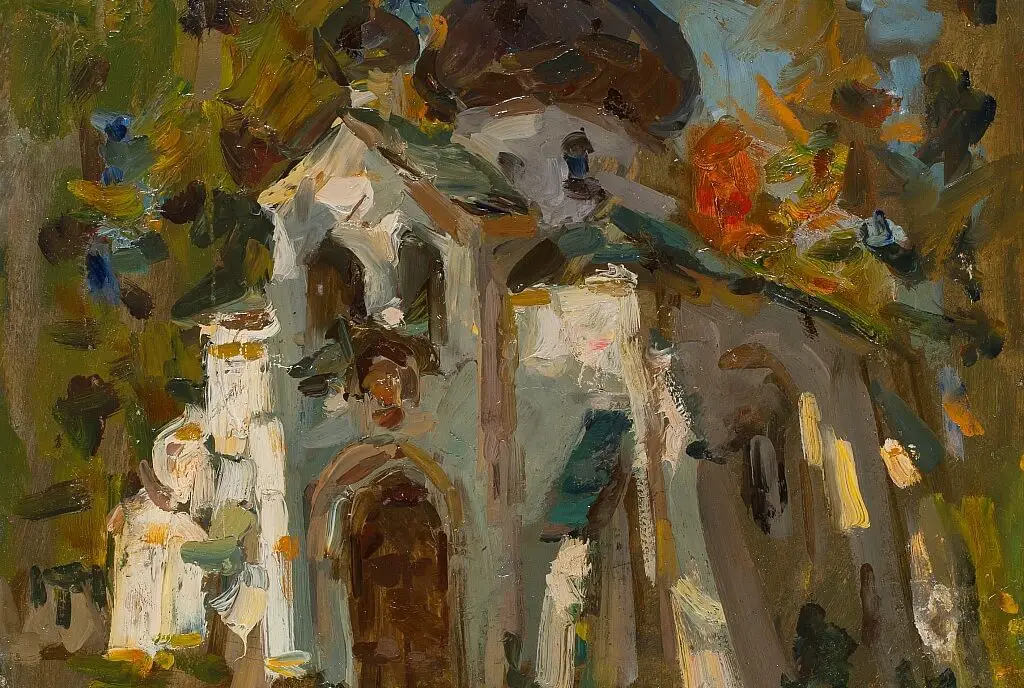
Museum of Russian Impressionism in Moscow
The Museum of Russian Impressionism curators have a mission – in addition to presenting visitors with beautiful and awe-inspiring works, the owners and staff conduct research, education, and events to bring awareness to Russian impressionism as a distinct phenomenon. Their goal is to someday achieve global recognition for the Russian impressionist period and celebrate its […]
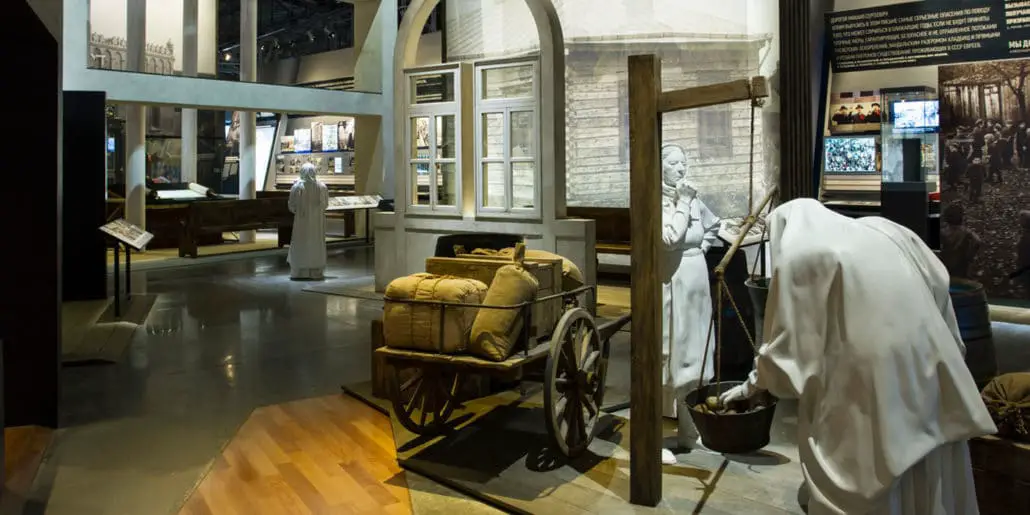
The Jewish Museum and Tolerance Center
The Jewish Museum and Tolerance Center presents a history of Russia through the eyes of its Jewish population, highlighting Jewish contributions to Russian history and emphasizing how Jews have suffered through the same tragedies as the rest of Russia (with special attention to events and policies that particularly impact Russia’s Jewish population). The center effectively […]
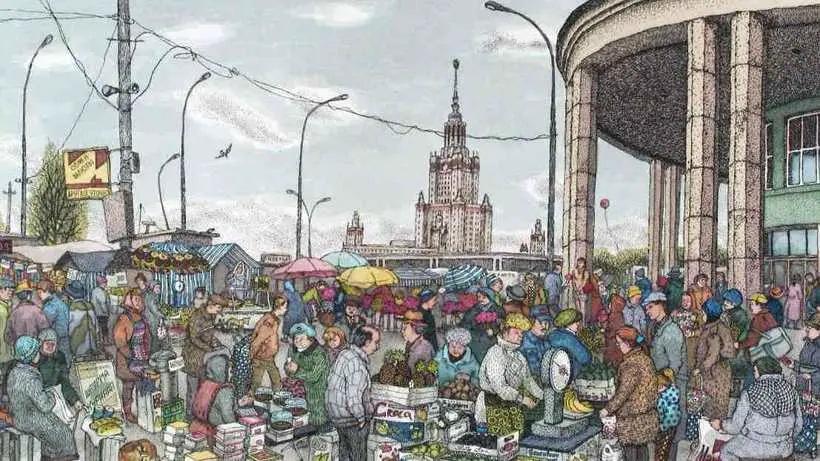
Alyona Dergilyova, My Moscow (Cityscape in Watercolors)
I was born in an old one-story merchant’s house in the Taganka District of Moscow. Our house stood on the corner of Vorontsovskaya Street, which then had a tram track, and Mayakovsky Pereulok. At one time, Vladimir Mayakovsky lived at the end of that pereulok, and my grandmother used to tell me how more than […]


